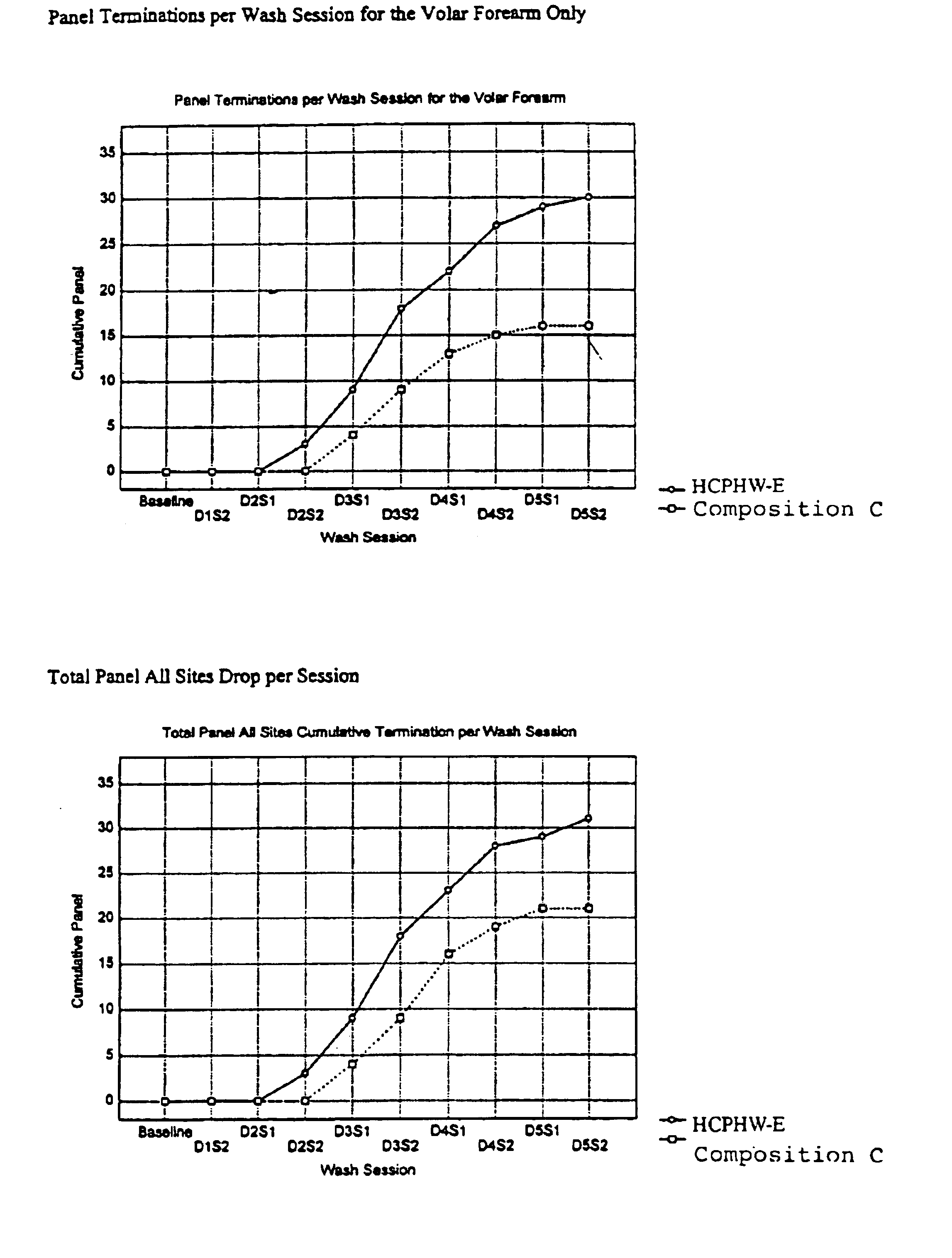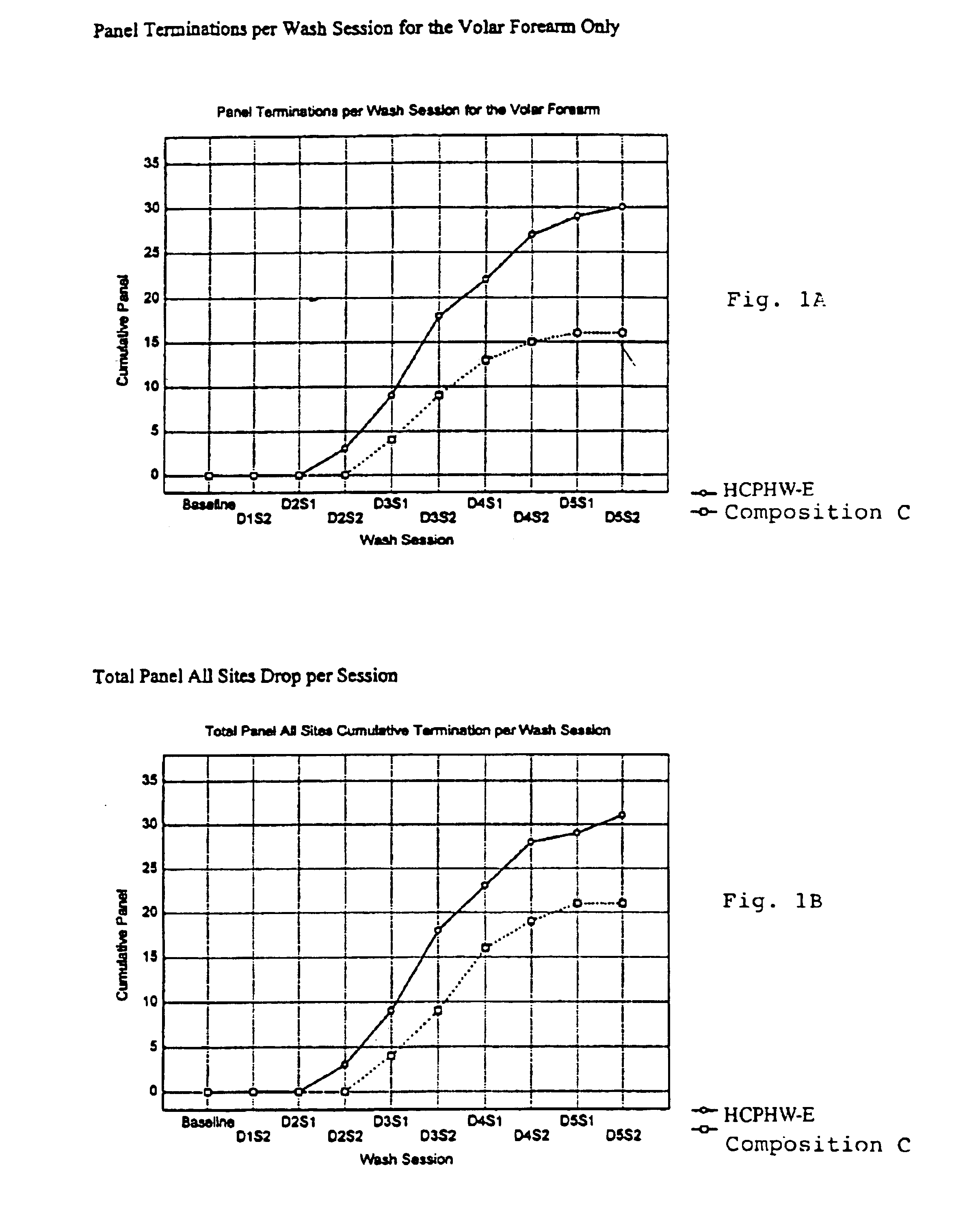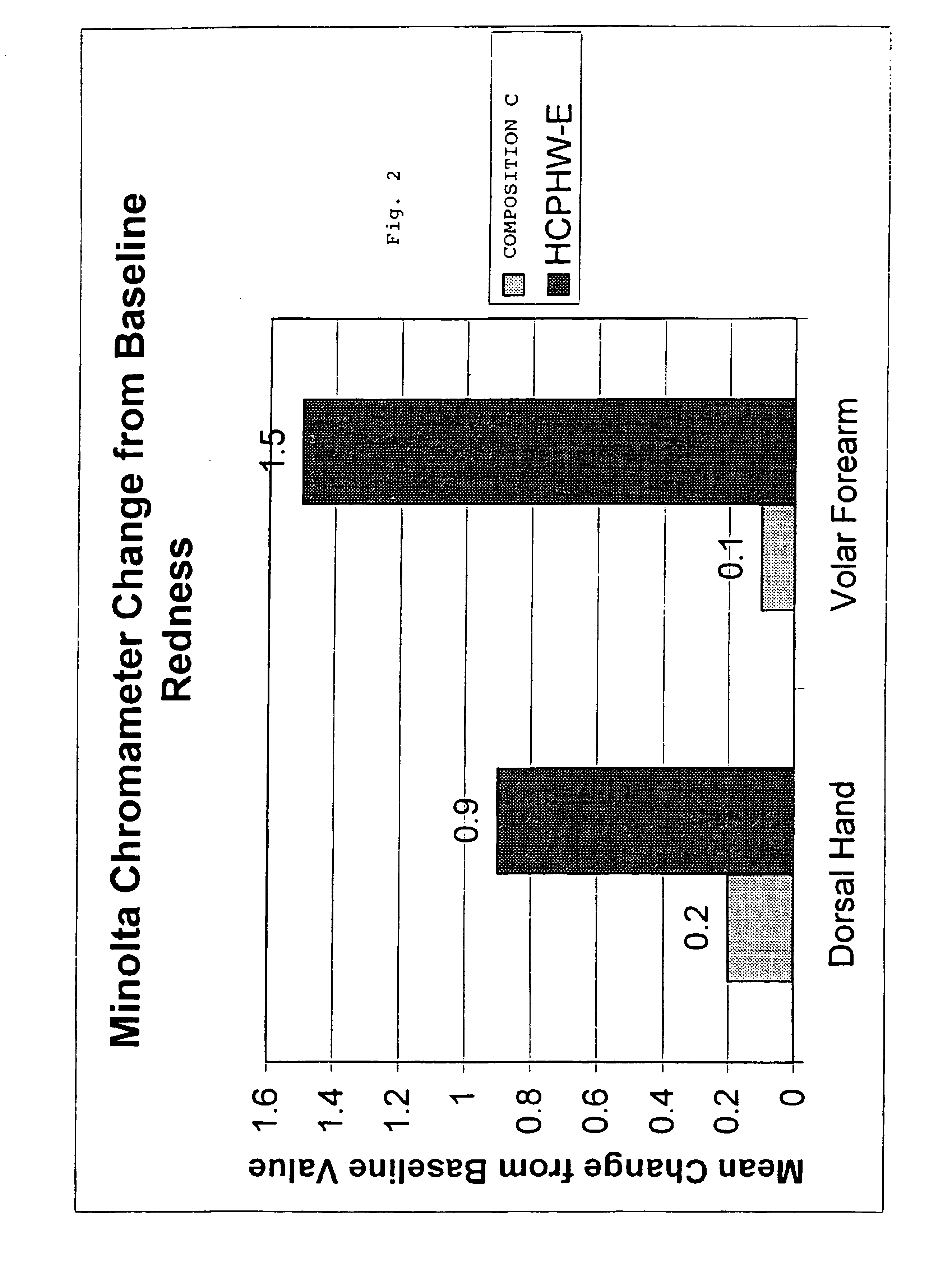High efficacy antibacterial compositions having enhanced esthetic and skin care properties
a technology of esthetic and skin care properties, applied in the field of antibacterial compositions, can solve the problems of low to moderate antibacterial activity, difficult to achieve a high log reduction, and inability to provide the rapid, broad range control of microorganisms desired by consumers, so as to reduce the gram positive and/or gram negative bacteria populations and reduce the level of bacteria
- Summary
- Abstract
- Description
- Claims
- Application Information
AI Technical Summary
Benefits of technology
Problems solved by technology
Method used
Image
Examples
example 1a
[0144]Phase stability and foam performance attributed to polyvinylpyrrolidone (PVP) polymer additives—The compositions in this example demonstrate the phase stability and performance observed during testing of compositions containing PVP polymer additives. In this test, PVP K-15 failed to improve foam properties in the base formula evaluated, whereas PVP K-30 exhibited foam property improvement at higher surfactant levels.
[0145]
Stable(S) / NotBottlePumpStableFoamFoamPolymersCommentFormula(NS)TestTestPVPK15MW =0.6TCS / 5DPG / 15SXS / S——8,0001.5ALS / 0.5CAPB / 0.2PVPK15PVPK30MW =0.3TCS / 5DPG / 15SXS / NSNTNT38,0000.75ALS / 0.05PVPK30PVPK30MW =0.3TCS / 5DPG / 15SXS / NSNTNT38,0000.75ALS / 0.02PVPK30PVPK30MW =1.0TCS / 5DPG / 15SXS / S++++38,0002.5ALS / 0.75CAPB / 0.1PVPK30
example 1b
[0146]Phase stability and foam performance attributed to modified guar polymer additives—The compositions in this example demonstrate the phase stability observed during testing of compositions containing modified guar polymer additives. The nonionic 2-hydroxypropyl ether guar gum polymers were successfully incorporated into the compositions. However, two moderately charged cationic polymers (JAGUAR C13S and C14S) were not stable in the base formula. JAGUAR C162, a similar polymer having less charge density, was effectively incorporated into compositions of the present invention. JAGUAR HP-60-containing compositions exhibited excellent slip properties for dry application, when the polymer is present in a sufficient amount to provide a perceivable esthetic improvement, but not an amount such that the composition is too slippery and too thick for use with a self-foaming pump.
[0147]
Stable (S) / Not StableBottle FoamPump FoamPolymersCommentFormula(NS)TestTestJAGUAR HP-8Guar Gum,0.3TCS / 5DP...
example 1c
[0148]Phase stability and foam performance attributed to a cationic copolymer containing 50% dimethyl diallyl ammonium chloride (DMAAC) and 50% acrylamide additive—The compositions in this example demonstrate the phase stability observed by incorporating a highly charged polymer into the composition. It was found that a relatively high surfactant level was required to successfully incorporate a highly charged polymer into the composition, even at a 0.05% polymer. As described in U.S. Pat. No. 6,107,261, the highest antimicrobial activity is obtained for compositions having a high % saturation of antimicrobial agent. Thus, raising the surfactant level to accommodate solubilization of the polymer or other additives, requires a higher level of antibacterial agent in the composition to maintain a high % saturation. For example, in the first composition of this example, 1.0% TCS was required to maintain the desired % saturation vs. 0.3% in compositions containing a lower amount of surfac...
PUM
| Property | Measurement | Unit |
|---|---|---|
| Fraction | aaaaa | aaaaa |
| Fraction | aaaaa | aaaaa |
| Fraction | aaaaa | aaaaa |
Abstract
Description
Claims
Application Information
 Login to View More
Login to View More - R&D
- Intellectual Property
- Life Sciences
- Materials
- Tech Scout
- Unparalleled Data Quality
- Higher Quality Content
- 60% Fewer Hallucinations
Browse by: Latest US Patents, China's latest patents, Technical Efficacy Thesaurus, Application Domain, Technology Topic, Popular Technical Reports.
© 2025 PatSnap. All rights reserved.Legal|Privacy policy|Modern Slavery Act Transparency Statement|Sitemap|About US| Contact US: help@patsnap.com



